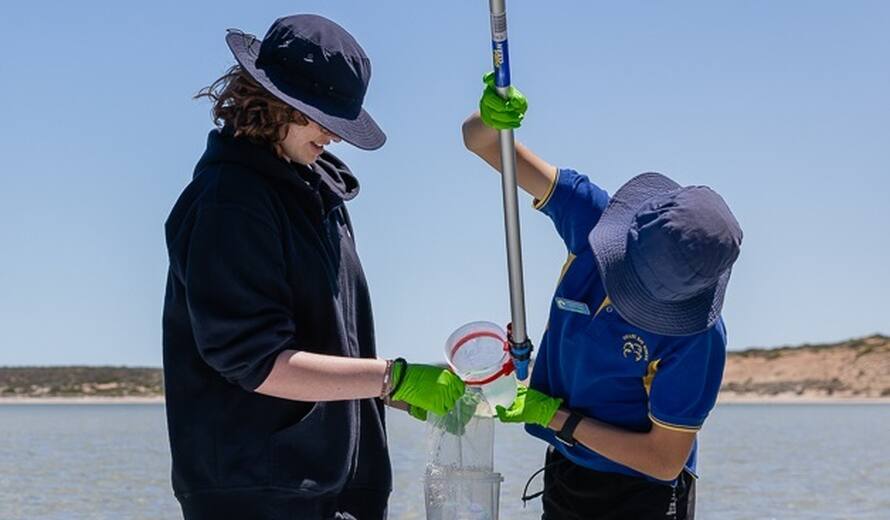Schoolchildren and Traditional Owners undertake eDNA sampling in Shark Bay, Australia
On 18 October 2022, schoolchildren aged 10 to 15 years old and Traditional Owners* at the Shark Bay, Western Australia World Heritage site joined the UNESCO environmental DNA (eDNA) sampling campaign as part of a global effort to better understand ocean biodiversity and the effects of climate change thereupon.
Amidst clear blue waters teeming with marine life, schoolchildren and Traditional Owners collected water samples at eight different locations across the UNESCO World Heritage site, including in the Eastern Gulf and Western Gulf. The sampling campaign was facilitated by the Western Australian Department of Biodiversity, Conservation and Attractions (DBCA) and started with a welcome to country ceremony by a young member of the Malgana Traditional Owner community.
Environmental DNA is an innovative scientific method that can be used to monitor and evaluate ocean biodiversity without the need to extract organisms from their environment. Just one liter of water may contain genetic material from hundreds of species and may help determine the area’s biodiversity richness.
"Seeing schoolchildren and Traditional Owners engaging in the environmental DNA sampling campaign in Shark Bay is a great way to engage the local community and foster a love for ocean conservation in our future leaders” says Luke Skinner, DBCA District Manager in Shark Bay.
Shark Bay was selected for the program for its known biodiversity that is supported by its extensive seagrass communities. Shark Bay hosts the largest seagrass plant in the world, the Posidonia australis, which extends over 70 miles. Ahead of the sampling, schoolchildren took an interactive course about the different types of seagrass and the species that live in it and were guided through a exercise on the possible contamination factors when sampling eDNA.
The UNESCO environmental DNA campaign is being rolled out across 25 marine World Heritage sites between September 2022 and April 2023. The eDNA data is expected to provide a one-off snapshot of biodiversity richness across marine World Heritage sites, particularly for fish species.
Combined with the Intergovernmental Panel on Climate Change (IPCC) heat scenario projections, the initiative will help inform potential geographic and distribution shifts of fish species as a result of climate change, leading to greater management outcomes.
Resulting data will be available at the UNESCO Ocean Biodiversity Information System, the world’s largest open science marine species database. Final results will be available in early 2024.
The UNESCO eDNA initiative is a joint collaboration between the Intergovernmental Oceanographic Commission and the World Heritage Centre. It is made possible with the support of the Government of Flanders (Kingdom of Belgium) and implemented in the context of the United Nations Decade of Ocean Science for Sustainable Development (2021-2030).
About the Shark Bay, Western Australia World Heritage site
Shark Bay, Western Australia was inscribed on the World Heritage List in 1991 for its stromatolites which represent the oldest form of life on earth; the salinity structure of the bay which protects them; the unique seagrass meadows, which are among the largest in the world and the refuges that its islands and peninsulas provide to rare and endangered fauna. The site is also one of the world’s most significant and secure strongholds for the protection of Dugong, with a population of around 11,000, and is home to a famous population of Bottlenose Dolphin.
* A traditional owner is an Aboriginal person with traditional rights and interests in land, which may or may not be recognised under the common law, Commonwealth or State legislation, for example because native title has been extinguished over an area (Source: The Government of Western Australia, Department of Parks and Wildlife, Corporate Policy Statement No. 69).


